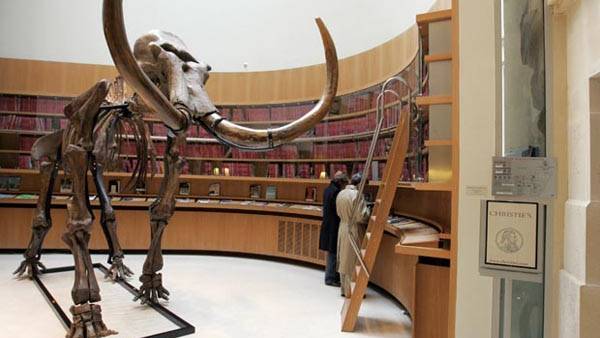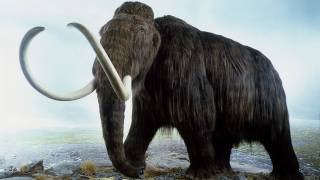Researchers aim to resurrect mammoth in five years
Source: ottawacitizen.com
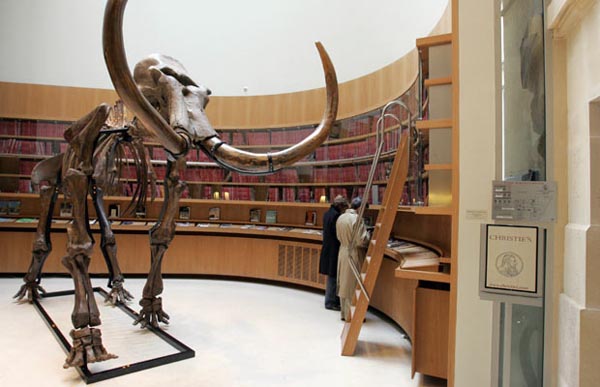
Japanese researchers will launch a project this year to resurrect the long-extinct mammoth by using cloning technology to bring the ancient pachyderm back to life in around five years time.
The researchers will try to revive the species by obtaining tissue this summer from the carcass of a mammoth preserved in a Russian research laboratory, the Yomiuri Shimbun reported.
"Preparations to realise this goal have been made," Akira Iritani, leader of the team and a professor emeritus of Kyoto University, told the mass-circulation daily.
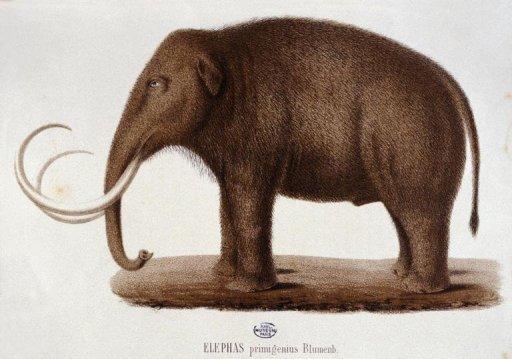
Under the plan, the nuclei of mammoth cells will be inserted into an elephant’s egg cell from which the nuclei have been removed, to create an embryo containing mammoth genes, the report said.
The embryo will then be inserted into an elephant’s uterus in the hope that the animal will eventually give birth to a baby mammoth.
The elephant is the closest modern relative of the mammoth, a huge woolly mammal believed to have died out with the last Ice Age.
Some mammoth remains still retain useable tissue samples, making it possible to recover cells for cloning, unlike dinosaurs, which disappeared around 65 million years ago and whose remains exist only as fossils
Researchers hope to achieve their aim within five to six years, the Yomiuri said.
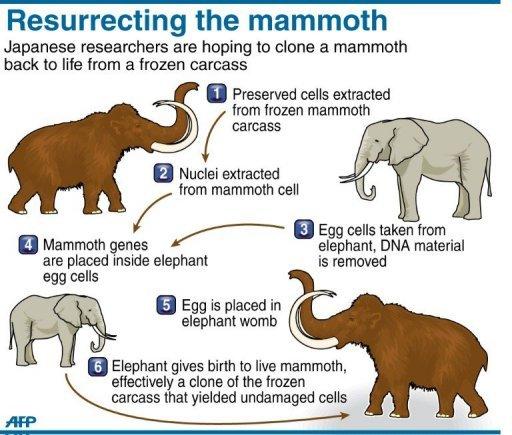
The key steps needed to clone a live mammoth from a frozen carcass. Japanese researchers will launch a project this year to resurrect the long-extinct mammoth by using cloning technology to bring the ancient pachyderm back to life in around five years time. Image: Source
The team, which has invited a Russian mammoth researcher and two US elephant experts to join the project, has established a technique to extract DNA from frozen cells, previously an obstacle to cloning attempts because of the damage cells sustained in the freezing process.
Another Japanese researcher, Teruhiko Wakayama of the Riken Centre for Developmental Biology, succeeded in 2008 in cloning a mouse from the cells of another that had been kept in temperatures similar to frozen ground for 16 years.
The scientists extracted a cell nucleus from an organ of a dead mouse and planted it into the egg of another mouse which was alive, leading to the birth of the cloned mouse.
Based on Wakayama’s techniques, Iritani’s team devised a method to extract the nuclei of mammoth eggs without damaging them.
But a successful cloning will also pose challenges for the team, Iritani warned.
"If a cloned embryo can be created, we need to discuss, before transplanting it into the womb, how to breed (the mammoth) and whether to display it to the public," Iritani said.
"After the mammoth is born, we will examine its ecology and genes to study why the species became extinct and other factors."
More than 80 percent of all mammoth finds have been dug up in the permafrost of the vast Sakha Republic in eastern Siberia.
Exactly why a majority of the huge creatures that once strode in large herds across Eurasia and North America died out towards the end of the last Ice Age has generated fiery debate.
Some experts hold that mammoths were hunted to extinction by the species that was to become the planet’s dominant predator - humans.
Others argue that climate change was more to blame, leaving a species adapted for frozen climes ill-equipped to cope with a warming world.
Article from: ottawacitizen.com
Top Image: File photo taken on March 20, 2007 in Paris, shows a mammoth skeleton that will be auctioned with those of a bear and a rhinoceros on the 16th of April at Christie’s.
Photograph by: Jack Guez, Getty Images
Mammoth Task: Ice Age giants a big business thousands of years on
Video from: YouTube.com
How to Clone a Mammoth - Beth Shapiro (2009)
Video from: YouTube.com
